Image credit Jane Glicksman, photo of Lois Brunet at Arlington Garden
106 years have passed since the extinction of the Passenger Pigeon, which went from flocks of hundreds of millions crossing the landscape like storms to a single bird “Martha” — the last of her species — who died in captivity in 1914. Unrestricted commercial hunting and trapping, among other causes, were responsible for the sudden and terrible disappearance.
Pasadena Audubon was founded in 1904, near the end of this extended disappearance, in order to protect another native pigeon (the Mourning Dove) from the same indiscriminate slaughter. One of its founding members, Scott Way, called the first meeting of the Society after responding to gunshots only to discover a wagon stacked full of dead doves.
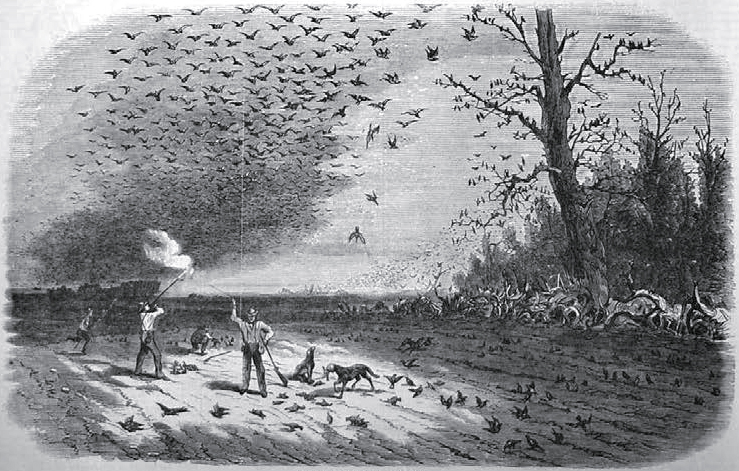 Frank Leslie’s Illustrated News (vol. XXV, no. 625, p. 8), 1867, “Shooting wild pigeons in Iowa”
Frank Leslie’s Illustrated News (vol. XXV, no. 625, p. 8), 1867, “Shooting wild pigeons in Iowa”
The Society was originally named the “California Audubon Society,” and it was the first such organization in California. In fact, at 116 years old, it is older than the national Audubon organization, which was founded one year after Pasadena Audubon.
Lois Brunet, the Program Director of Pasadena Audubon, describes the founding value of PAS as conservation, and the organization continues to be an active force in local conservation projects. Most recently, Pasadena Audubon and the Arroyo Seco Foundation settled a 5-year lawsuit with Los Angeles County aimed, in part, at protecting habitat around the Devil’s Gate Dam in Hahamongna Watershed Park. Sediment had increased behind the dam due to run-off from the 2009 Station Fire and is slated for removal for flood protection. Brunet calls the agreement with the County a success for PAS: among other things, the settlement reduces the size of the removal footprint, increases the water retained behind the dam to provide habitat for aquatic birds, and mandates native plant restoration of some impacted areas.
We speak with Lois Brunet about local habitat conservation, gardening for birds, the pleasures of birding, and much more. This interview has been edited for clarity and length.
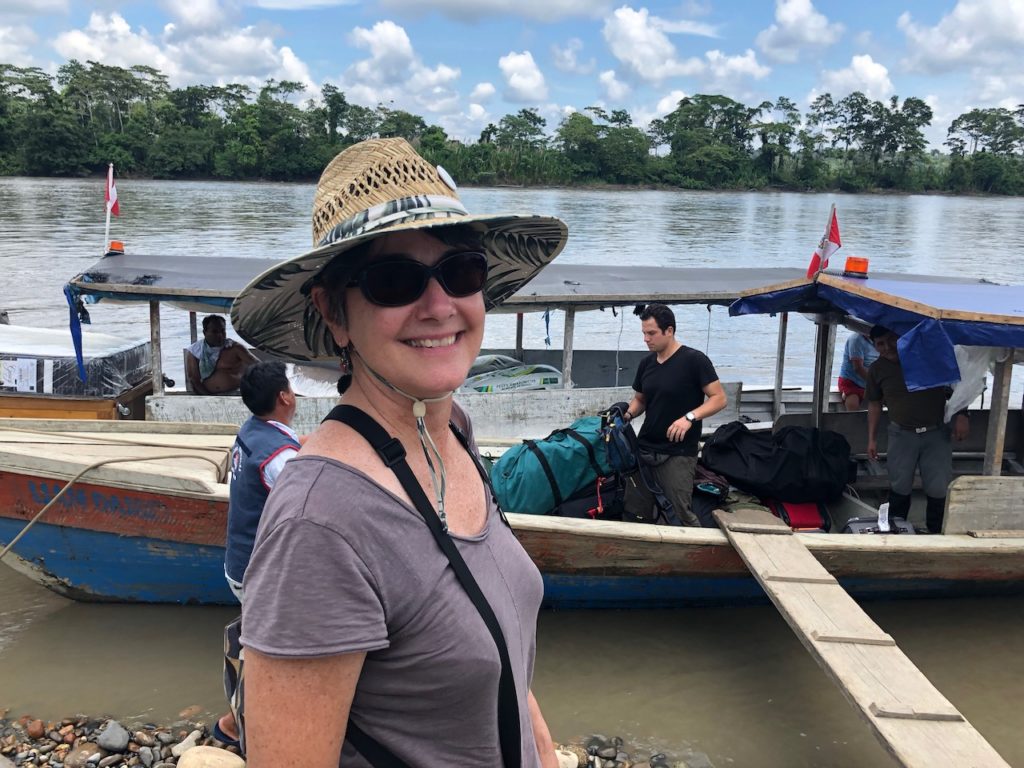 Image credit Pascal Brunet, Lois during a birding trip to Peru earlier this year
Image credit Pascal Brunet, Lois during a birding trip to Peru earlier this year
AG: How did you become a birder?
LB: Birders always like to ask each other “What was your spark bird?” “What was the bird that lit the fire for you?” And I can tell you that, for me, it was the Wood Thrush.
When my husband and I became empty-nesters, we started to spend more time outside in the woods. While wandering around the woods, we heard this bird singing an amazing song. We recorded it, and we had to find out what this bird was .. and from there it just sort of snowballed. Looking for birds became our activity every weekend. And we soon found ourselves meeting birders, making a bird list, and so on.
Wood thrush song
AG: Can you tell us a little more about Pasadena Audubon?
LB: Pasadena Audubon Society was founded in 1904 to fight the slaughter of Mourning Doves, which were being killed indiscriminately and [were at risk of disappearing] just as Passenger Pigeons had after once darkening the skies with their amazing flocks. Hence, at its very founding, the organization was centered on conservation. Our other core values include education and birding. Our mission statement is to “bring the excitement of birds to our community through birding, education and the conservation of bird habitats.”
I would say that — over the years — we have focused a lot on helping people get into birding. As birding became a serious sport in the 1970s, people really started going all-in. There are birders who do “big years” and listing can be quite a competitive thing. The best competitive birders in LA can see over 370 species of birds in a year just in LA County!
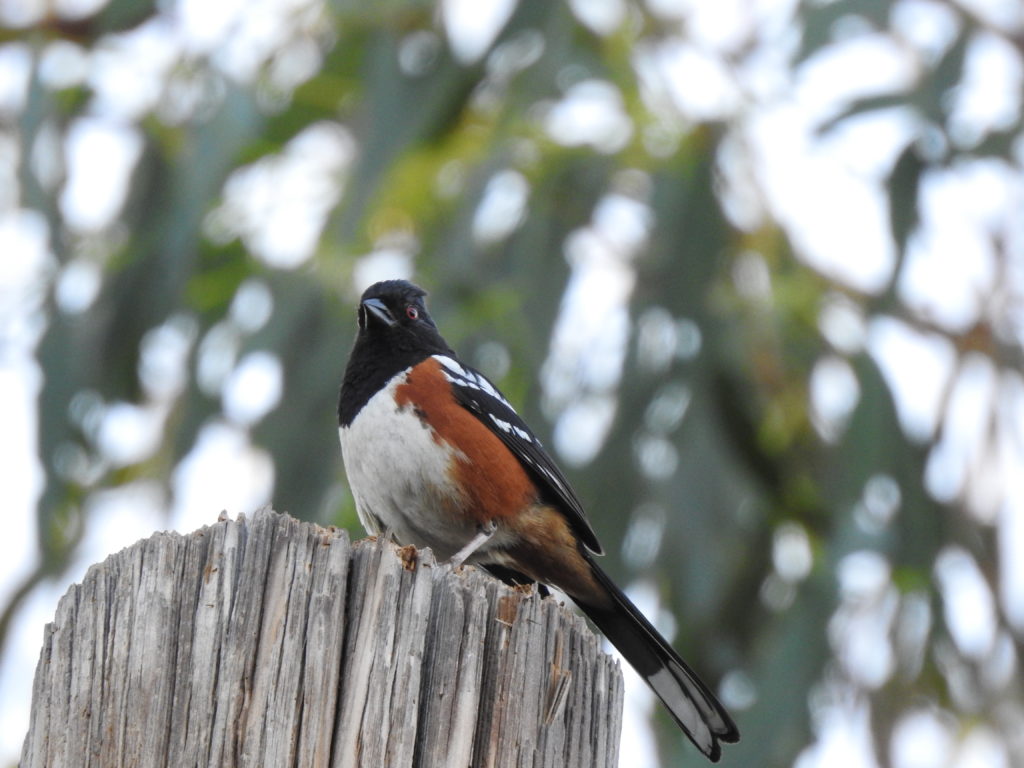 Image credit Lois Brunet, Spotted Towhee, photo from Arlington Garden, year round resident at AG
Image credit Lois Brunet, Spotted Towhee, photo from Arlington Garden, year round resident at AG
AG: I am surprised to learn that we have that many species in LA County! I don’t suppose you know how many have been seen at Arlington Garden?
LB: According to ebird.org [which is a birding listing tool from Cornell University] 106 species have been reported in Arlington Garden, including a Kingfisher, which is really a water bird! And 50 species have been listed just this year. There is really an extreme amount of biodiversity in Southern California as these numbers demonstrate!
AG: On the topic of conservation, what do you think are the biggest threats to our native bird population in Southern California?
LB: The two things that come to mind are habitat loss and climate change. Habitat loss, for example, is [one key part of the] explanation for the fact that bird populations have dropped 25% in North America over the last 50 years.
I think a lot of people are just nuts about birds [for their own sake]. But I also believe that birds are an indicator of the health of the entire ecosystem, because their fate is so tightly bound-up with other species … I am thinking of insects, for example. We know that insect populations are way down, and one of the bird families that has suffered the most from this precipitous drop are aerial insectivores like swallows. I remember, when I was younger, you’d drive through the woods, and your windshield would just be covered with bugs. That doesn’t happen anymore.
In an urban area like ours, habitat loss isn’t cutting down woods and creating a parking lot. Habitat loss is planting a Ginkgo tree instead of planting a native Coast Live Oak or Sycamore. A lot of the alien ornamental trees that we plant don’t host native insects … and so these plants are taking up space in the ecosystem without supporting other forms of life the way our native trees do.
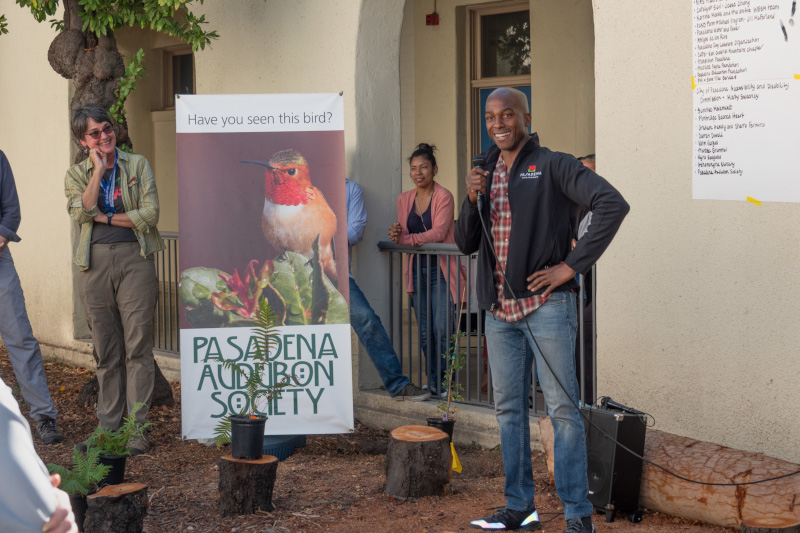 Image credit PAS, Vice Mayor Tyron Hampton at Pasadena Audubon’s Washington Elementary STEM native garden
Image credit PAS, Vice Mayor Tyron Hampton at Pasadena Audubon’s Washington Elementary STEM native garden
AG: What about your educational mission?
One of our signature programs is partnering with public schools to offer a bird science program. Our program runs from Kindergarten to 5th grade and is linked with the normal STEM curriculum in schools. We go into the classroom twice, and then we take students on a half-day field trip to Peck Road Water Conservation Park to observe the vast number of bird species found there. This gives students the real experience of holding binoculars and looking at birds.
Last year, we built a native garden in one of the public schools [Washington Elementary STEM Magnet]. We were able to get some grant funding and put in all these natives plants and water-wise features. The hope is that, thanks to this garden, the kids are going to start to see the birds they learned about in the bird science program.
AG: What do you see as the relationship between habitat-focused gardens like Arlington and healthy bird populations in urban areas like Pasadena?
These kinds of places are super-important! If you sit at Arlington Garden at this time of year with a pair of binoculars, you’ll see orioles and tanagers. There’s a lot of bird life there, and that’s because there’s a lot of the right stuff to eat!
AG: What sort of garden habitat should gardeners interested in supporting our native bird populations be attempting to provide? How can local gardeners here is Southern California garden for the birds (haha)?
LB: The short answer is plant natives because native plants support [native species]. For instance, native milkweed supports Monarch butterflies, which are a food source for Black-headed Grosbeaks.
If you have space, plant the Coast Live Oak! The Coast Live Oak hosts in the range of 350 insect species, and it provides acorns for the Acorn Woodpeckers and Scrub Jays. It is just a treasure trove of life in this part of the world.
Finally, you should always put a water feature in your garden! If you want to attract birds — put water. They’ll come to hang out, and it’s a great place to photograph them.
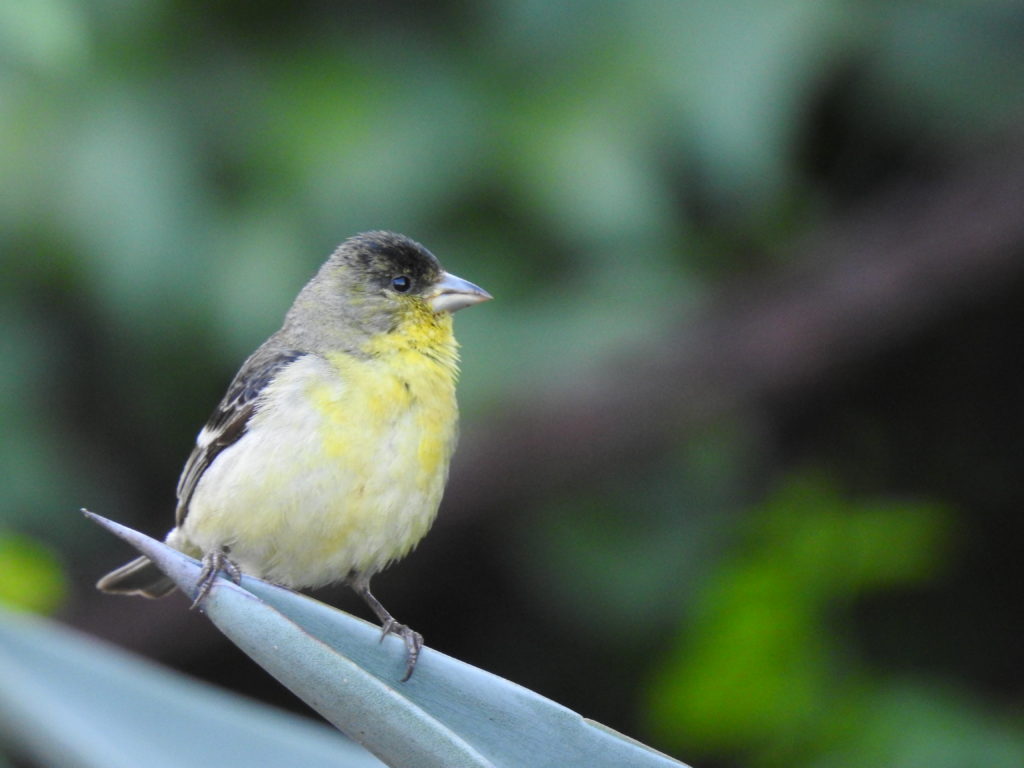 Image credit Lois Brunet, Lesser Goldfinch, photo from Arlington Garden, year round resident at AG
Image credit Lois Brunet, Lesser Goldfinch, photo from Arlington Garden, year round resident at AG
AG: What bird species might a visitor to Arlington Garden expect to see? What species might they *hope* to see in the garden?
LB: Common birds that you might see at Arlington Garden include:
House Finch (photo below)
Lesser Goldfinch (photo above)
Acorn Woodpecker (you’ll hear it!)
Anna’s and Allen’s Hummingbirds are pretty much guaranteed every time you go, but I have seen a Black-chinned Hummingbird and a Rufous Hummingbird. And I notice that people have also listed [on ebird.org] Costa’s Hummingbirds and Calliope Hummingbirds! Calliope would be the one that would get people running over to see it.
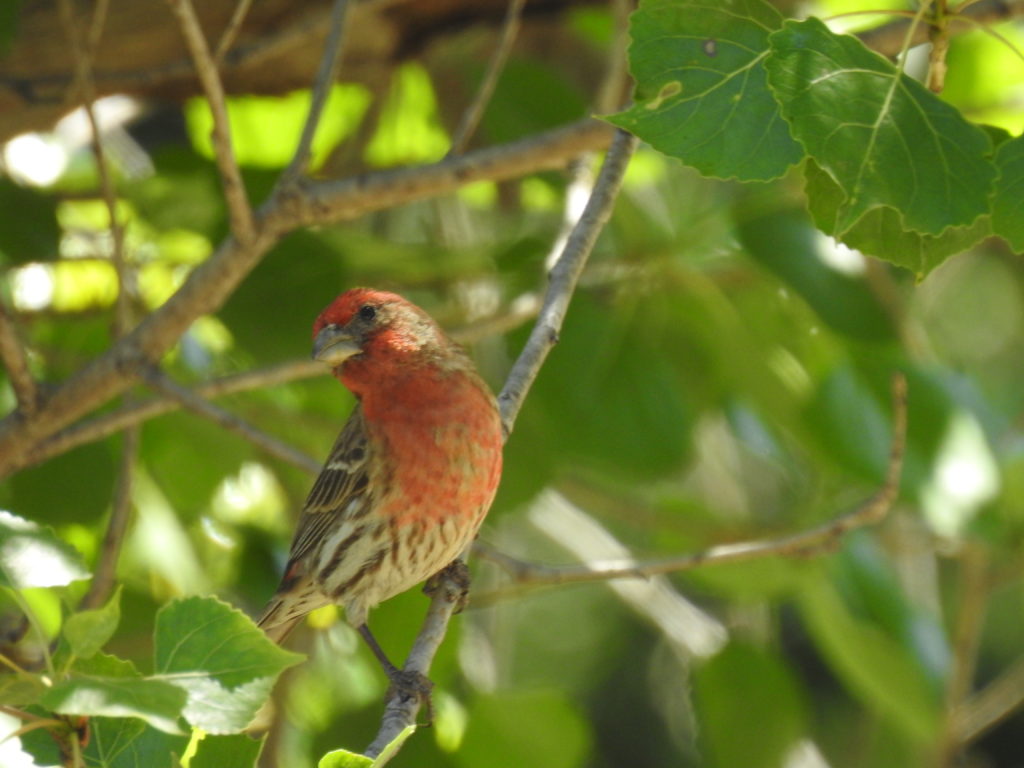 Image credit Lois Brunet House Finch, photo from Arlington Garden, year round resident at AG
Image credit Lois Brunet House Finch, photo from Arlington Garden, year round resident at AG
AG: What would you be excited to see in the Garden?
I love Kingfishers! We have the Belted-Kingfisher [in Southern California]. Typically, you would see them on a branch above a pond. But one was seen on a telephone wire above the garden by a birder friend with very good eyes!
AG: How can people get involved with Pasadena Audubon?
LB: Our usual routine is to do a program once a month at Eaton Canyon, which usually includes a guest speaker to discuss bird science. We are trying to keep up with these online via zoom.
You can go to our website and see what we are offering during the pandemic. You can join the organization from our website, and hopefully soon you’ll be able to sign-up or attend a field-trip.
Although the pandemic is currently interfering, we normally offer over 100 field-trips a year. These trips can be as simple as walking through the LA Arboretum (a two hour walk on flat terrain) or longer trips such as two day trips to the Salton Sea or to Morro Bay. These trips are just a lot of fun because of the joy of company and [the opportunity to do] some serious birding.
AG: Over the past two months, the national Audubon organization has been a vocal advocate for equitable access to outdoor spaces for Black people and people of color. How does this issue inform the work of Pasadena Audubon Society at a more local level?
LB: First, let me say that the racist incident in Central Park was appalling [this is part of what the National Audubon organization was responding to earlier in the summer]!
[At the local level], we don’t have as many Black birders in Pasadena Audubon as would be representative of the local population, and the same goes for Latinx birders. We are thinking about how to diversify our membership [and remove barriers to access] for these communities. Our goal is to have a membership that is reflective of the population at large.
In terms of the things we are doing now, our bird science program was designed from the beginning as a public school program serving children from a wide range of backgrounds. Nature belongs to everyone. As Christian Cooper said “the birds belong to all of us.” What’s more, the conservation movement will only be able to make the change that we need to see, when we have the broadest coalition possible. We need our whole community in this with us.
At Pasadena Audubon, we have work to do, and we have had several meetings about this over the past month. One possibility [we are discussing] is to provide public school environmental science clubs with additional resources (such as binoculars) and a training/engagement program.
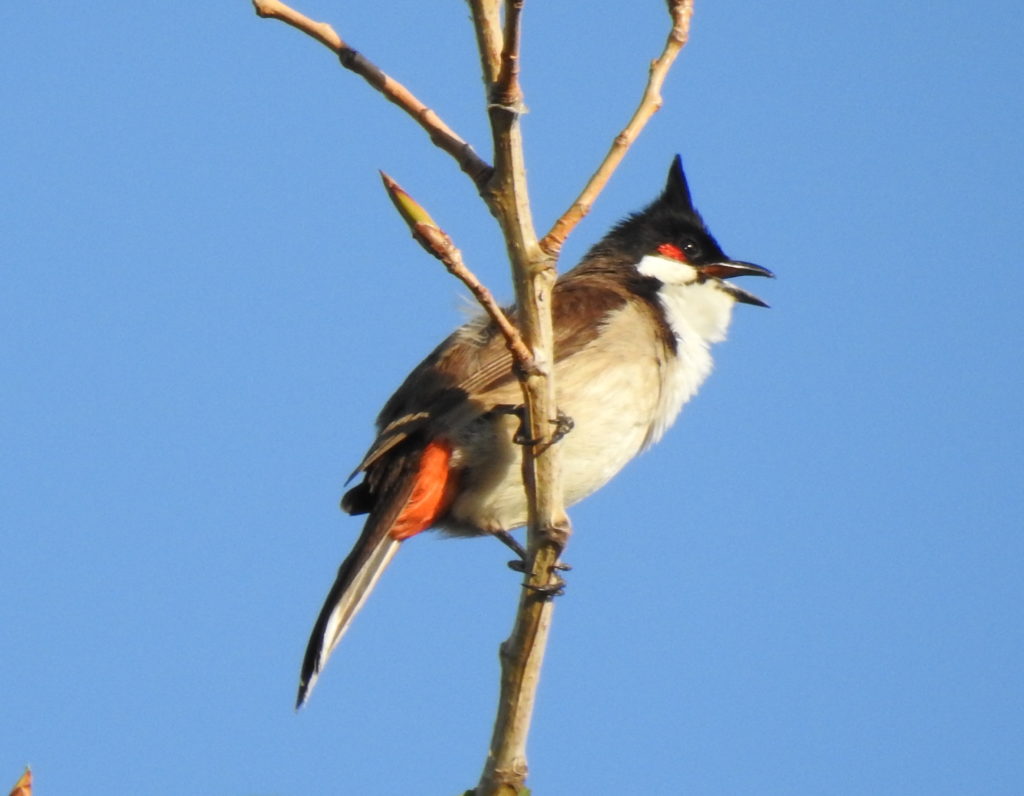 Image credit Lois Brunet, Red Whiskered Bulbul, photo from Arlington Garden, a bird from South Asia which has a naturalized local population
Image credit Lois Brunet, Red Whiskered Bulbul, photo from Arlington Garden, a bird from South Asia which has a naturalized local population
AG: Why birding?
LB: Let me tell you the five pleasures of birding adapted from The Central Park Effect, a wonderful documentary about birding:
The first, of course, is just the beauty of the bird.
The second is the pleasure of being outdoors.
The third is the pleasure of learning, because identifying birds and [understanding their habits] is a complicated thing.
The fourth is the pleasure of listing. This pleasure is like the pleasure of collecting: for instance, when someone points a new bird out to you for the first time, and you didn’t quite see it, you might decide not to count it because you don’t feel like it’s yours. You are collecting the experience of seeing all these birds. And the idea that you can collect without taking anything home is a beautiful idea.
The final pleasure is the pleasure of being around all these other nutty people who are also crazy about birds!
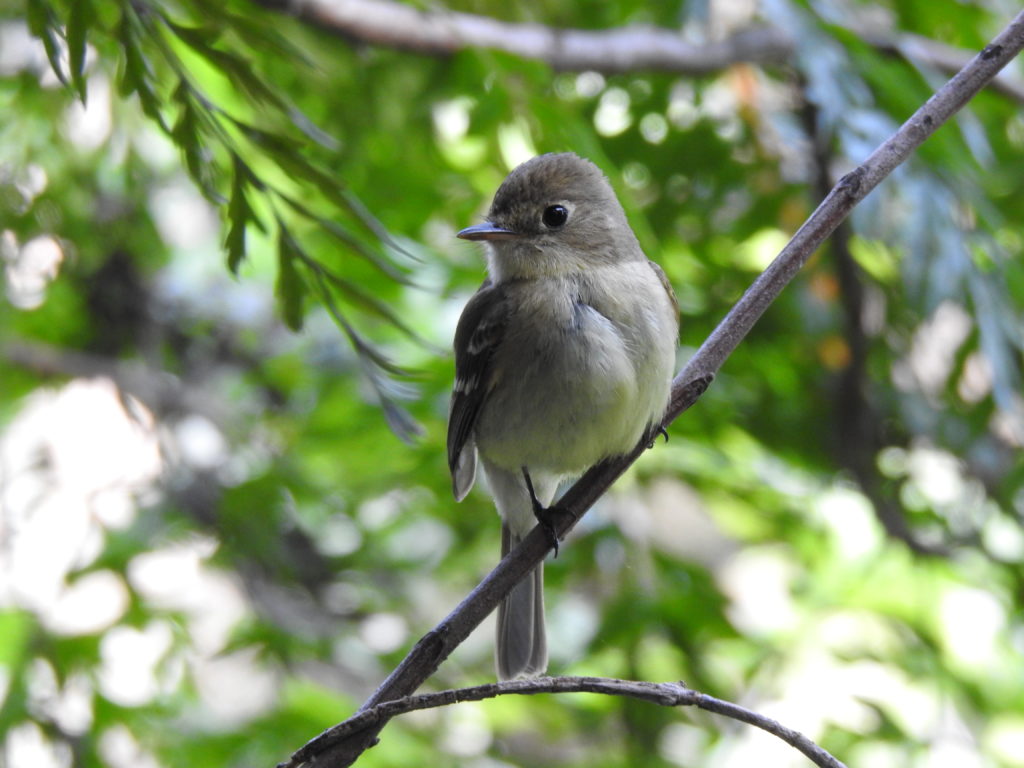 Image credit Lois Brunet, Pacific-slope Flycatcher, summer visitor to Arlington Garden
Image credit Lois Brunet, Pacific-slope Flycatcher, summer visitor to Arlington Garden
SPEED ROUND
AG: What is your favorite native bird species (the toughest question)?
AG: What is an interesting book/article/film that you would recommend to people interested in learning more about our native birds?
Kingbird Highway, A Season on the Wind by Kenn Kaufman.

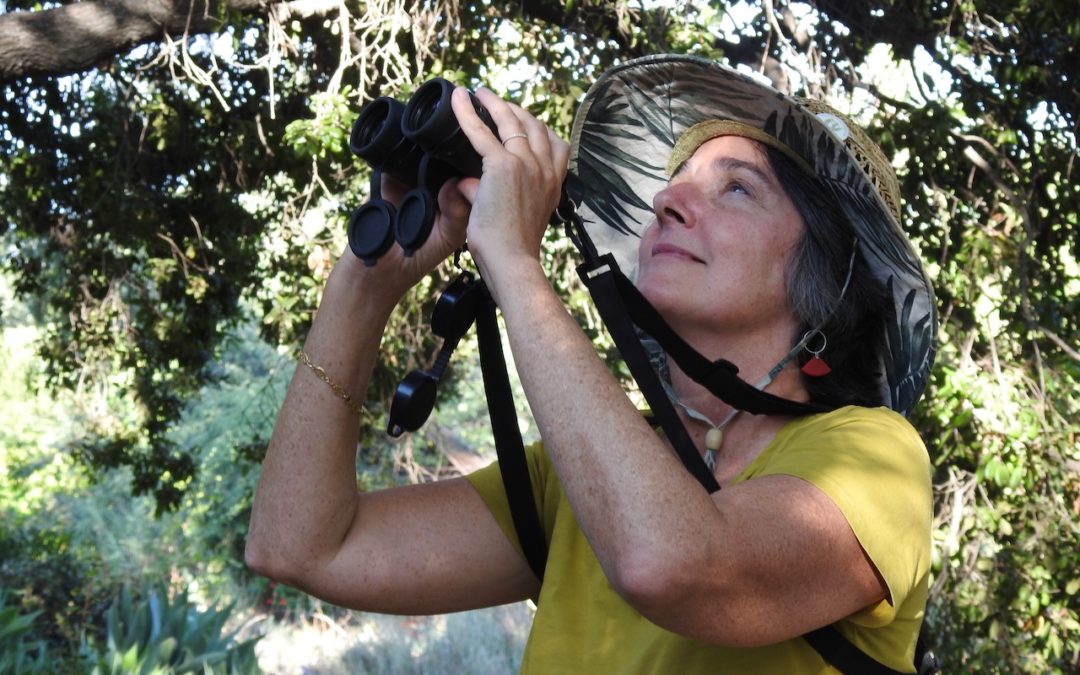

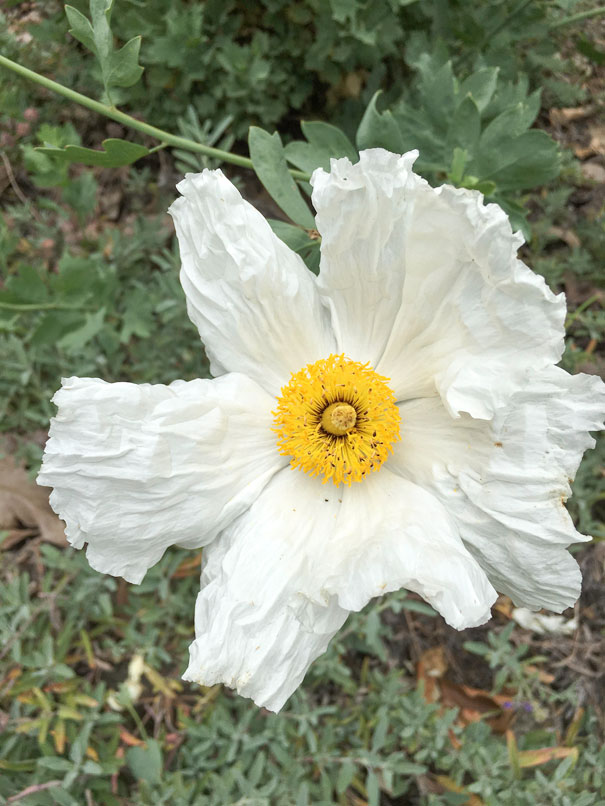
Recent Comments